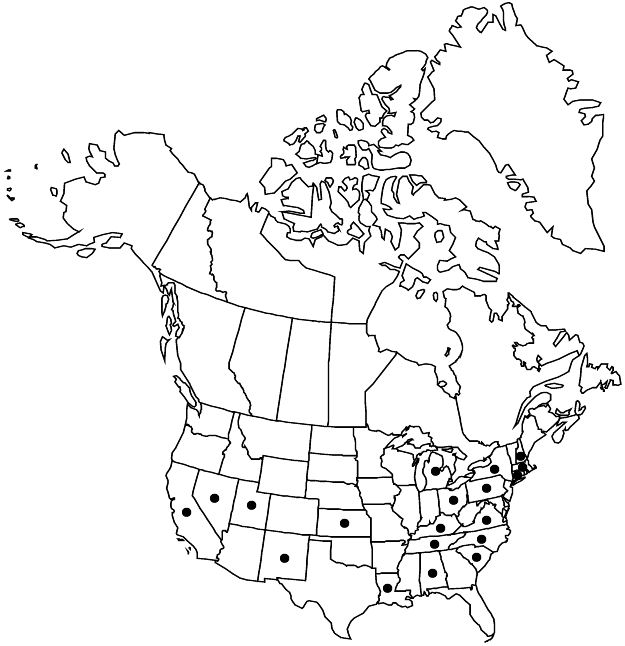Cucurbita pepo subsp. pepo
Plants annual; roots taproots or fibrous. Stems creeping or climbing, rooting adventitiously at nodes, to 3 m, hispid with persistent, strongly pustulate-based hairs and a hispidulous-hirsutulous understory; tendrils 2–7-branched 1–5 cm above base, hispidulous to hirsutulous, eglandular. Leaves: petiole 5–20 (–24) cm, pustulate-hispid (pustulate-based) and hispidulous-hirsutulous; blade sometimes white-spotted at vein junctions, broadly ovate-cordate to triangular-cordate or reniform, shallowly to deeply palmately (3–) 5–7-lobed, 20–30 × 20–35 cm, usually broader than long or equally so, base cordate, lobes ovate-deltate to obovate or obovate-rhombic, midveins of leaf lobes not distinctly elongate-whitened, margins denticulate to serrate-denticulate, surfaces hirsute, hirsute-strigillose, villous-strigose, or hispidulous-scabrous, eglandular. Peduncles in fruit 5-ribbed, not or very gradually expanded at point of fruit attachment, hardened, woody. Flowers: hypanthium campanulate, 8–12 mm; sepals linear to subulate-linear, 8–25 mm; corolla yellow to golden yellow or orange, tubular-campanulate, 4–10 cm; anther-filaments glabrous; ovary villous. Pepos wholly light to dark green, green with white stripes, or minutely cream or green-speckled to yellow, orange, or bicolored green and yellow, globose or depressed-globose to ovoid, obovoid, ellipsoid-ovoid, broadly ellipsoid, slightly pyriform, cushion-shaped, or cylindric, 5–10 (–25) cm, usually smooth or ribbed, rarely verrucose, flesh whitish to yellowish or pale orange, soft, not bitter. Seeds whitish to cream or tawny, narrowly to broadly elliptic to obovate, rarely orbiculate, 7–15 (–26) mm, margins raised-thickened, surface ± smooth. 2n = 40.
Phenology: Flowering Jun–Oct.
Habitat: Vacant lots, trash heaps, roadsides, disturbed sites
Elevation: 0–300 m
Distribution

Introduced; Ala., Calif., Conn., Kans., Ky., La., Mass., Mich., Nev., N.H., N.Mex., N.Y., N.C., Ohio, Pa., S.C., Tenn., Utah, Va., Mexico, South America, also in West Indies, Central America, Eurasia, Atlantic Islands
Discussion
Selected References
None.
Lower Taxa
No values specified.